The crucifix of a rosary can sometimes be dated by its style and material. Wood was used in early rosaries. Celluloid was introduced in 1869. Rosary makers began to use aluminum for crucifixes and religious medals in 1887. The style of the crucifix reveals clues about the dedication of the rosary.
An icon crucifix is one which has pictures that illustrate a Biblical event. The most famous icon crucifix is the San Damiano crucifix that depicts events related to the crucifixion and resurrection of Jesus Christ.
The San Damiano Crucifix is often placed on rosaries that honor St. Francis of Assisi. According to legend, St. Francis prayed before this crucifix in the chapel of San Damiano when God told him to restore the church.
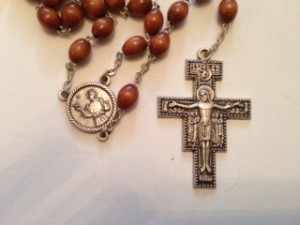
The rosary shown is dedicated to St. Francis of Assisi. The center medal and Pater beads (Our Father beads) have images of St. Francis. The San Damiano crucifix is closely associated with St. Francis.
The Crown of Thorns Crucifix was popular for rosaries made in the 1930s. The Crown of Thorns can be seen behind the central image of Christ. ( The rosary shown was made in 1936.)
Pope John Paul II favored a log crucifix. Rosaries that honor Pope John Paul II begin with a log crucifix and have his image on the center medal.
Some rosaries begin with a Stanhope Cross rather than a crucifix. The Stanhope is unique in that it has a peephole, a small lens through which images of saints or holy places can be seen.
The Tau Cross is shaped like the letter T. Some historians believe it is patterned after the sign the Israelites made on their doors on the night of the Passover.
Because the olive tree is native to the Holy Land, olive wood is a highly desired material for crucifixes and rosaries. Often crucifixes and rosaries made of olive wood can be traced to artisans in Jerusalem.

The rosary shown has a crucifix made of olive wood. The center medal contains soil from Jerusalem.
The style and material of the crucifix adds distinction to the rosary. It is a clue to the dedication and purpose of a rosary.
To learn more about rosaries, crucifixes, crosses, and center medals, read The Rosary Collector’s Guide by Gloria Brady Hoffner and Helen Hoffner. This 152 page hardcover book has 240 color photographs and helps collectors identify unique religious articles. It is available on Amazon.com, Barnes and Noble.com, the Catholic Faith Store online, and other book stores, websites, and religious article stores.

Helen Hoffner and Gloria Brady Hoffner are often able to bring their rosary collection to display for school groups, church groups, and community organizations. To arrange a presentation or ask a question about rosaries, contact them at rosarycollector@aol.com


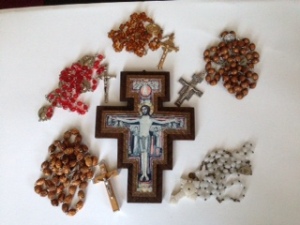

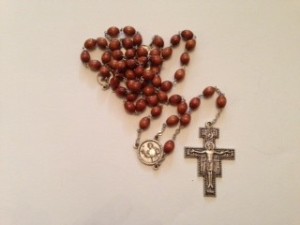


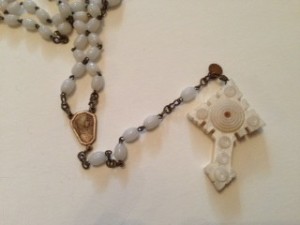
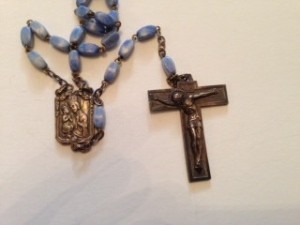
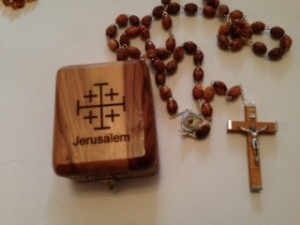
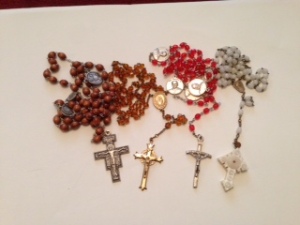
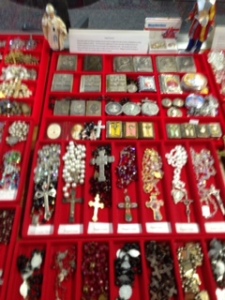
Very cool.
I still have a question from the last blog post tho — my rosary center medal has the Sacred Heart on one side and the Immaculate Heart of Mary on the other — not OL Mt Carmel — does that change the possible age?
LikeLike
We still believe that the rosary you described was made in the 1940s to 1950s. There has been a great deal of variation among rosary makers. Some have favored particular images of the Blessed Mother.
LikeLike